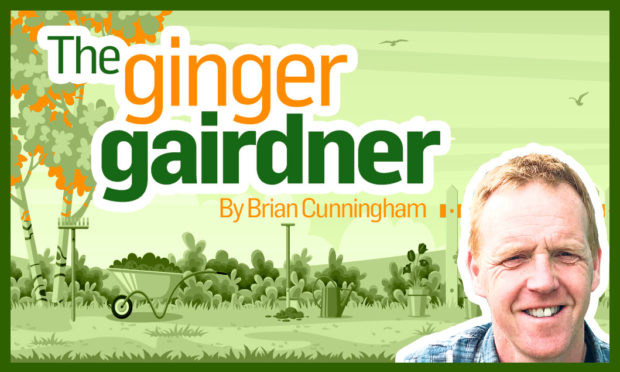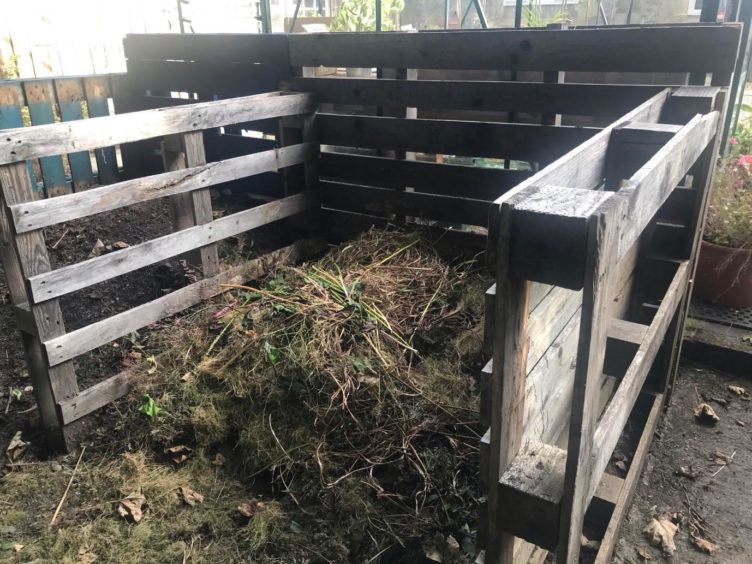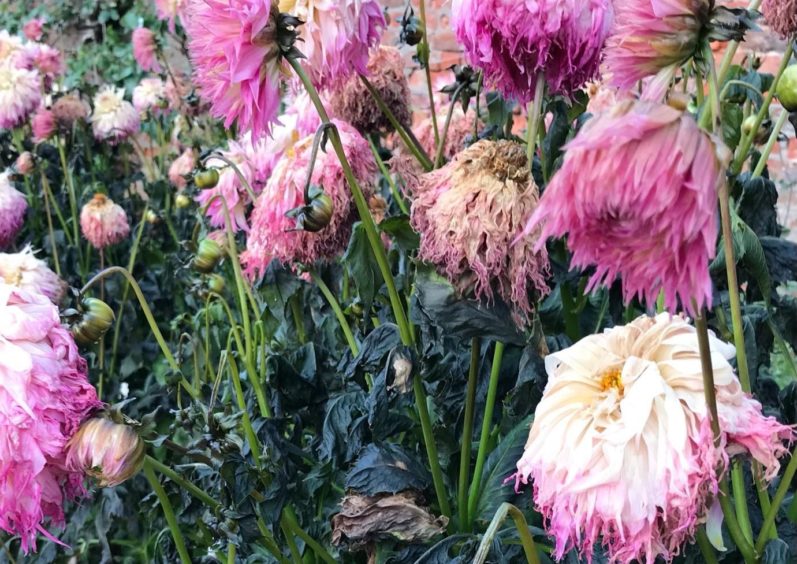This week, Brian Cunningham has important work to do on the compost heap and is caught unawares by the first frost …
The end of September saw some lovely early autumn weather. At this time of year you can still get some good heat when the sun is out, but with those clear blue skies come cooler nights and nippy starts to the day.
For me, there isn’t much that beats being outdoors at this time of year as the sun begins to rise. The light, the sounds and the early morning scents are so different at that time of the day and just urge me to get going and on to my days work with the soil. You start the morning off all wrapped up with you winter shirt on but by mid-morning the sun is up and you’re back down to the summer t-shirt.
Perhaps I’m looking back with rose-tinted spectacles but I seem to recall when I first started out as an apprentice gardener – back in the early 1990s – every autumn was like this.
At Craigtoun Park we had raised beds that used to be filled with annual displays of summer bedding. Come September / October when these plants were looking exhausted after weeks of putting on a show, they were pulled out of the ground and taken to the compost heap and so began the annual job of feeding and improving the soil, making ready for next year’s display.
First, a trench of soil is removed from the bed the width and depth of a spade, then a layer of well-rooted horse manure placed along the bottom. The soil from the next trench would then be placed on top of the manure of the one before where the process was repeated until the whole bed completed.
This job of “single-digging” was – for us apprentices – a way to instil the ethos of the hard work required and also to teach us of the high standards expected on every job.
Done properly, the completed bed should be as level as a bowling green and not look like the Himalayas putting green in St Andrews. This took me a couple of attempts to get my eye in but I can still remember the feeling of satisfaction and pride getting compliments from the “old boys”.
Without clouds in the sky, the overnight temperatures begin to drop. This poses the risk that – at some point – they will drop low enough to bring a frost, and that’s what happened slightly earlier this year than I would normally expect.
At Scone during the last week of September there were a couple of nights I went out in the morning and thought “maybe”, but eventually it came, the first real frost of the season with temperatures below zero.
I could tell from some of the plants in my own garden that this had been a damaging cold night. In the Palace kitchen garden the sweet peas were standing there as if to say: “is that the best you can do?”, but with the sun shining on the dahlias they were already showing the tell-tale signs that their time was up for the season; their tender foliage all withered and blackened.
If you are new to growing dahlias then all is not lost. If we look after them in the right way over the winter, they will star for us again next year.
Firstly, let’s not waste the foliage, cut the stems down to about 15cm from the ground then get it onto the compost heap. Here, it will break down over winter and can be used as a mulch for your plants next year.
If you are in a warm, sheltered garden with free-draining soil then you may want to cover them with a protective layer of compost and leave them in the ground over the winter. For me, working on wet soil, I’m not going to risk this.
Instead, I’ll carefully dig the tubers up, knocking off as much soil as possible before placing them upside down in a crate and leave them a couple of weeks in the glasshouse. It’s easier to clean off the remaining soil after having had a chance to dry off further. The tubers are then put back in their crates – right way up this time, just covering up to their necks with dry compost or sand to help act as a wee blanket.
I then keep these dahlia crates in one of the old walled-garden sheds which are dark and cool but still need to be kept frost-free with the aid of a small heater until spring. That’s when I bring them out and the fun starts all over again.
This weekend:
If you’ve ever fancied trying to make your own compost then there’s no time like the present. As the garden heads towards its winter rest, we are about to be spoilt with material just perfect for composting: hedge-clippings, leaves, spent herbaceous foliage, bedding plants, hanging baskets, shredded winter-prunings, uncooked kitchen waste and the final grass clippings.
Purpose-made compost bins can be purchased but can easily be put together cheaply from old pallets or timber posts and rails. It’s important to get air into your pile by turning or mixing your pile once a month, which helps with the composting process.
This is one of those warming jobs just perfect for a sunny, cold winter’s day.












